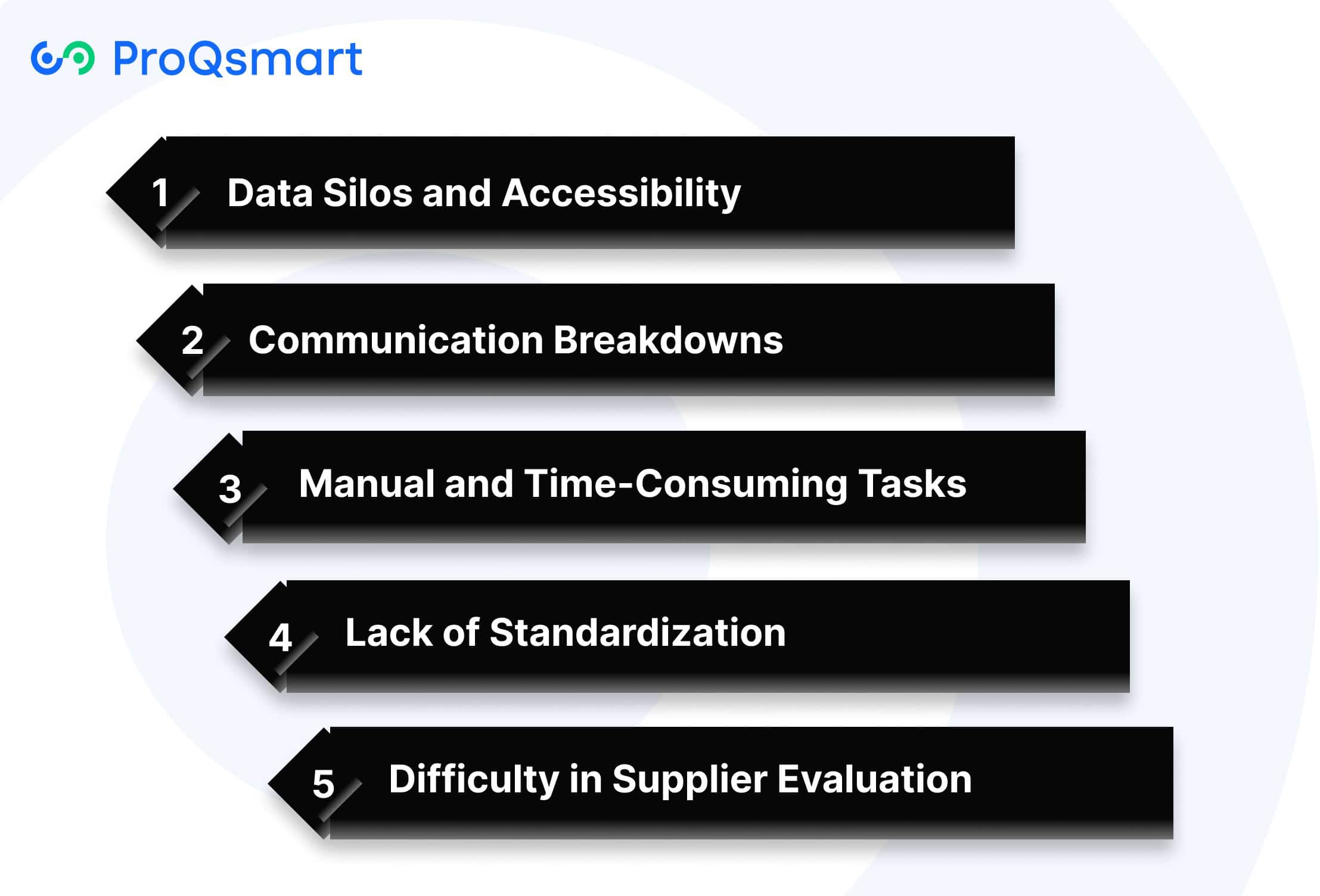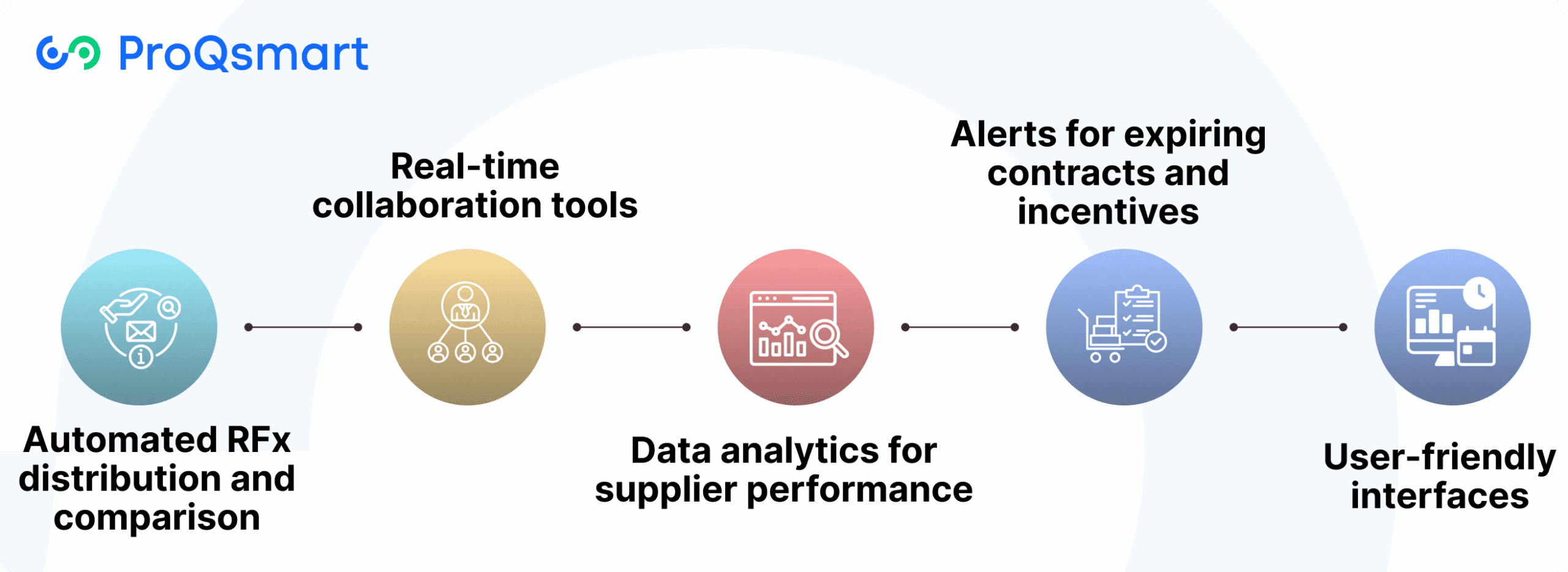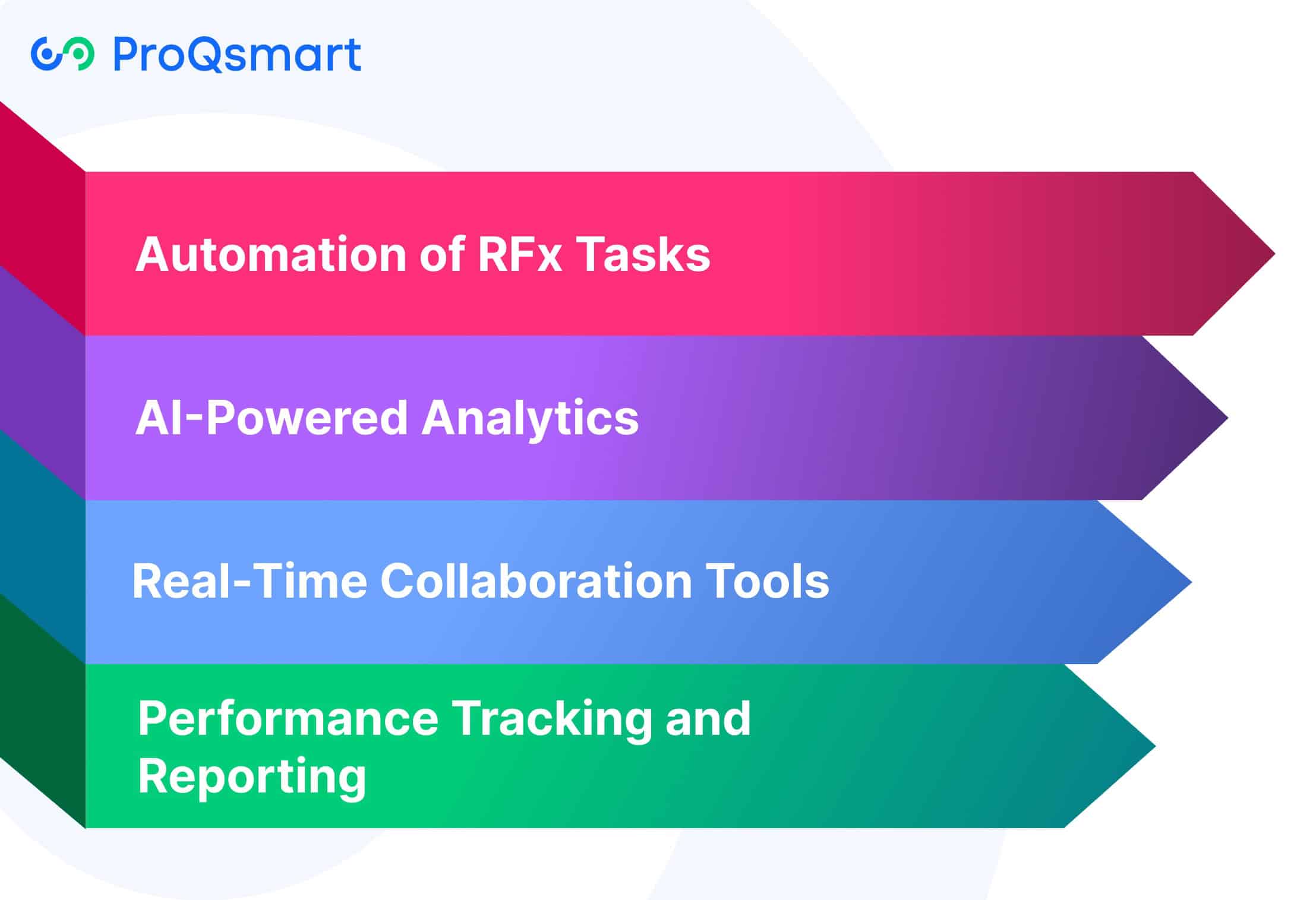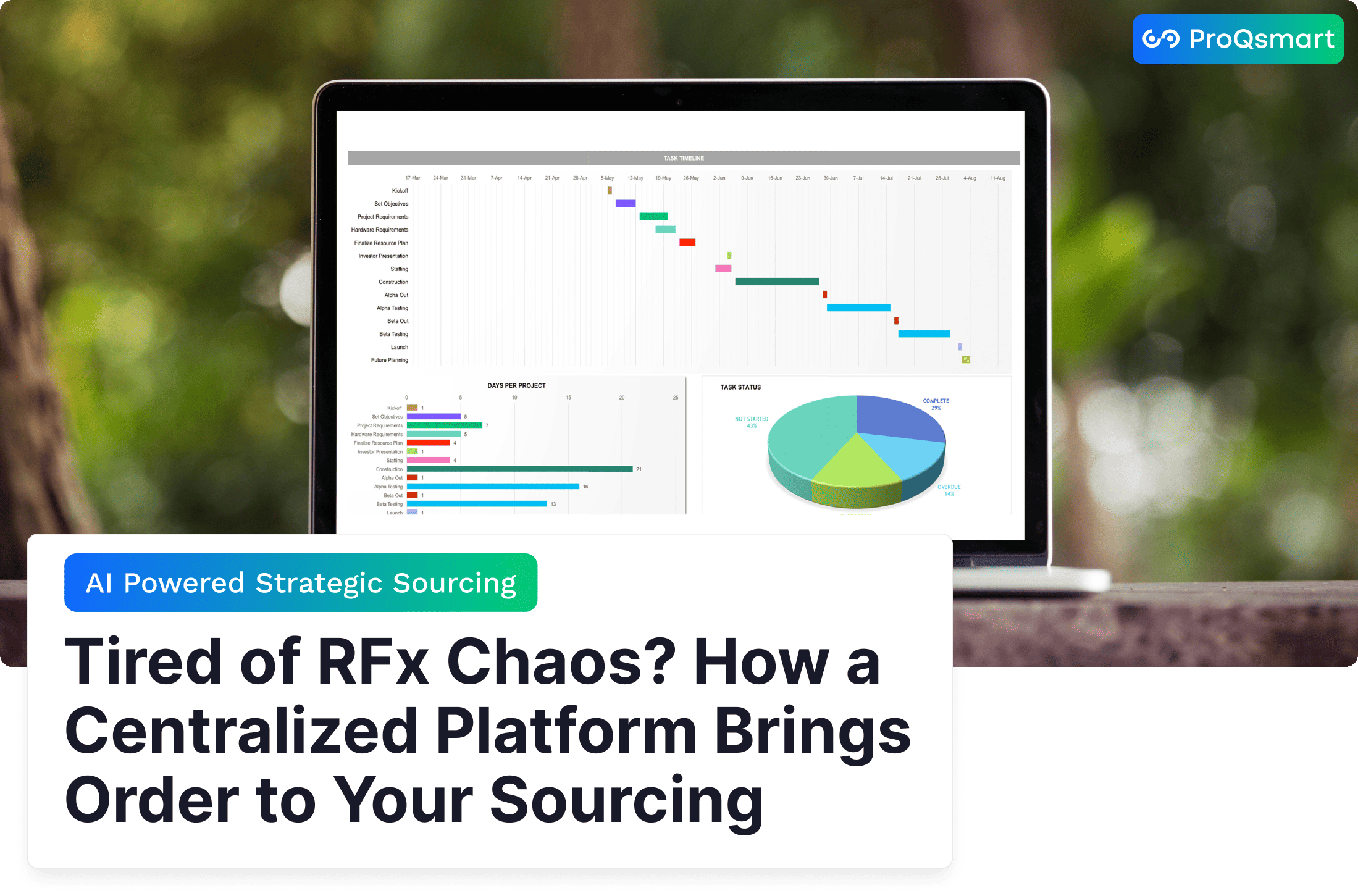Are you tired of navigating the chaos of RFx processes? Do you struggle with manual workflows, inconsistent communication, and incomplete supplier responses? You’re not alone. Many procurement teams face these challenges, which can lead to delays, inefficiencies, and suboptimal supplier selection. Whether you’re dealing with RFIs, RFPs, or RFQs, each process requires careful management to ensure that you’re getting the best possible information from suppliers.
By centralizing your RFx processes, you can bring order to your sourcing efforts, streamline communication, and ensure that you receive accurate and complete responses from suppliers. This not only improves the efficiency of your procurement operations but also enhances your ability to make informed decisions based on well-structured evaluation criteria. In this article, we’ll explore how a centralized platform can transform your RFx management, helping you achieve more efficient and effective procurement outcomes.
What is RFx?
RFx, ‘Request for X’, is a catchall term for the different procurement requests. This could be a Request for Information (RFI), Request for Proposal (RFP) or Request for Quotation (RFQ).
This strategic sourcing tool allows you to collect accurate and detailed information from suppliers. Beyond that, it encourages an organized and clear approach to procurement.
With a better understanding of RFx, procurement professionals can develop smarter sourcing strategies, helping them better fit the needs of their organization and the market. RFx helps facilitate this critical step that connects buyers and vendors, allowing both parties to feel confident in expectations and deliverables set forth.
Common RFx Types: RFI, RFP, RFQ
|
RFx Type |
Definition |
Use Case |
|---|---|---|
|
RFI |
Collects general supplier or market information. |
Ideal for exploring new suppliers or understanding market trends. |
|
RFP |
Solicits detailed proposals addressing specific business needs. |
Used for complex projects requiring tailored solutions. |
|
RFQ |
Requests detailed price quotes for defined goods or services. |
Best suited for straightforward, price-driven purchases. |
Each RFx type serves a different purpose. For example, an RFI brings in supplier capabilities from the start, whereas an RFQ narrows down competitive pricing.
ProQsmart, with its AI-driven tools, simplifies these processes by automating workflows and providing real-time collaboration. This ensures procurement teams select the most appropriate RFx type for their needs.
RFx Purpose in Procurement
RFx’s ultimate purpose is to ensure informed decision-making. It provides an important opportunity to collect critical data from the market, including pricing, timelines and supplier qualifications.
Streamlined RFx processes increase transparency and efficiency. Through platforms such as ProQsmart, organizations are able to drive cost savings and improve regulatory compliance.
Challenges in Traditional RFx Processes

Traditional RFx processes are loaded with inefficiencies that hinder procurement operations, driving up costs and jeopardizing decision-making. These challenges stem from outdated manual processes and workflows that fail to support the rapid pace of today’s procurement processes.
1. Data Silos and Accessibility
Disconnected data systems create barriers to effective RFx management by isolating critical information across departments. Accessibility to up-to-date anonymized data that isn’t lagged could prevent missed opportunities or erroneous negative evaluations. Breaking down these silos through integrated procurement tools, like ProQsmart, fosters real-time collaboration and ensures all stakeholders access consistent, accurate RFx documents.
2. Communication Breakdowns
Without clear communication, vendors don’t know what answers you’re seeking, leaving them to guess and dragging out critical procurement cycles. With so many internal teams constantly involved, these silos disrupt productive collaboration.
Tools that centralize all communication, like ProQsmart’s real-time collaboration feature, allow for better coordination and help avoid costly missteps.
3. Manual and Time-Consuming Tasks
Because manual RFx processes are incredibly labor-intensive, procurement teams often find themselves spending too much time on mind-numbing, repetitive tasks. This inefficiency extends timelines and raises the risk of errors.
Automating workflows with intelligent solutions such as ProQsmart optimizes internal operations and re-allocates time back to teams to zero in on more strategic pursuits.
4. Lack of Standardization
Lack of standardized RFx documents makes evaluation processes difficult, resulting in convoluted evaluation processes and inconsistencies. Standardized templates help to promote clear and comparable submissions.
This mission is backed by ProQsmart with fully customizable, easy-to-use tools created for procurement pros.
5. Difficulty in Supplier Evaluation
Evaluating supplier proposals manually is cumbersome and prone to bias; however, ProQsmart’s rfx software provides AI-driven tools for objective assessments, ensuring suppliers meet contract terms effectively.
Impact of Traditional RFx Challenges
These traditional RFx challenges often create enormous roadblocks that function as showstoppers to procurement efficiency, efficacy, and overall success.
These challenges, engrained in cumbersome manual processes and legacy methods, impact cost savings, supplier relationships, compliance, and innovation. Tackling these challenges head-on is imperative for any organizations looking to improve procurement performance and drive long-term value and success.
Increased Costs and Delays
These inefficiencies, like the manual creation of RFPs, RFQs, and RFIs from scratch, are tedious and prone to mistakes. This often increases operational costs by a factor of 3-5. Research shows that 4 in 5 procurement teams experience project delays due to manual workflows.
These repeated delays risk the loss of critical project timelines and sour important relationships with suppliers. In practice, for instance, a slow RFx can throw a wrench in a supplier’s production schedule and incur costly, last-minute changes.
By adopting solutions such as ProQsmart’s automated workflows, you’ll simplify your document creation and response tracking. Taking this approach will save you money and time in the RFx process.
Missed Opportunities for Savings
Because traditional RFx processes are not standardized, it’s difficult to take a holistic approach to analyzing vendor responses. This can lead to significant cost savings slipping through the cracks, as procurement teams aren’t able to easily determine which bids are the most competitive.
Strategic sourcing gives you the power to discover hidden savings opportunities. Armed with AI-driven market intelligence platforms such as ProQsmart, you have unprecedented access to actionable, real-time transparency into vendor performance.
Strained Supplier Relationships
Without proper oversight, RFx processes can result in unclear requirements and lack of communication that undermine supplier trust. This bond is crucial, as positive vendor relationships can foster valuable partnerships that lead to innovative solutions and competitive pricing.
ProQsmart helps to build collaboration through real-time communication tools and proactive monitoring of supplier performance, leading to more resilient partnerships.
Reduced Compliance and Control
Over 90% of procurement teams are unable to make vendors comply because of traditional RFx challenges. Manual processes make it nearly impossible to avoid human error, bias, and lack of visibility into vendor risks.
Similarly, smart compliance protects your procurement with auditable sourcing data and automated pre-qualification to keep you regulatory compliant with ProQsmart.
Hindered Innovation
Even worse, these outdated RFx practices kill innovation by shutting down opportunities for suppliers to propose more creative solutions.
ProQsmart powers innovation through smarter bidding in RFx. Having this alignment with your potential budget allows suppliers to focus their efforts on providing the most value-driven proposals possible.
Centralized RFx Management: A Solution
Centralized RFx Management approach can help you get ahead of these challenges. Consolidating all RFx activities into a single platform streamlines daily operations for procurement teams.
This centralized approach makes it easier to create, distribute and analyze RFPS, RFIs, and RFQs while minimizing errors, improving collaboration, and fostering better decision-making. This forward-thinking approach streamlines the procurement process and brings organizations closer to achieving their goals by maximizing value and minimizing risks.
What is a Centralized RFx Platform?
A centralized RFx management platform is an all-in-one system built specifically to streamline and manage RFx processes. It integrates technologies across the drafting, distributing, tracking and analyzing of supplier responses, creating uniform workflows and improved vendor oversight.
Key components include automated document management and performance tracking and reporting. These features interface easily with ERP and CRM systems, providing real-time data updates between these systems and back-office processes.
Utilizing platforms like ProQsmart, procurement professionals can strengthen vendor selection by executing against previously defined criteria like quality standards and performance metric requirements.
Key Features of Centralized Platforms

- Automated RFx distribution and comparison
- Real-time collaboration tools
- Data analytics for supplier performance
- Alerts for expiring contracts and incentives
- User-friendly interfaces
These features make procurement processes easier at every step, helping promote transparency and maintain compliance challenges. ProQsmart, for example, goes beyond automating workflows to balance procurement with budget targets and drive cost savings.
Benefits of Centralization
By embracing centralized RFx management, you’ll benefit from consistent and reliable data, readily accessible insights, and increased collaboration.
Leveraging solutions such as Bid & Tender Management Software, teams can take a proactive and informed approach to supplier vetting, thereby accelerating workflows and accomplishing wider procurement goals.
How Centralization Transforms RFx Process
When centralizing the RFx process, procurement is truly transformed. It creates systems that eliminate unnecessary manual work and puts a focus on desired long term outcomes. Centralizing all procurement activities onto one, unified platform creates consistency and removes nearby work from the process.
This centralization provides procurement teams with the tools necessary to confidently make data-driven decisions. With ProQsmart, you can standardize data collection and scoring to streamline the entire process. With simple tasks automated, teams can spend more time on developing strategy instead of checking boxes.
Improved Data Management
Centralized RFx platforms further optimize the procurement process by bringing all RFx data and activity together in one central source of truth. This means that procurement teams always work with accurate, real-time information, avoiding mistakes arising from using data from multiple, disconnected sources.
For example, by centralizing e-tenders and supplier performance data, like that provided by ProQsmart, agencies gain a consolidated view of vendor capabilities and contract histories. Protecting data integrity means implementing preventive measures such as regular data audits and providing AI-powered insights to help professionals spot discrepancies early on.
This method contributes to more informed decision-making while simultaneously helping to meet regulatory requirements.
Enhanced Collaboration
Centralizing communication channels opens a line of communication between all stakeholders through shared platforms that create transparency. With centralization, collaborative tools such as those provided by ProQsmart allow teams to communicate in real time, eliminating communication delays and creating a better flow of information.
Procurement teams can use these tools to set scoring criteria for suppliers. By centralizing the process this way, it encourages more uniform and qualified evaluations. Taking advantage of this tight collaboration helps deliver RFx outcomes that are not only efficient, but more closely aligned with broader organizational goals.
Streamlined Workflows
By automating time-consuming tasks like documentation management and compliance verification, centralized RFx platforms like ProQsmart simplify the workflow process. This kind of automation can reduce the time procurement teams spend on administrative tasks by as much as 80%.
Reducing time spent on repeatable processes allows procurement professionals to shift their focus toward building collaborative supplier relationships and creating better sourcing strategies.
Better Supplier Selection
Supplier quality Selection and award Centralization enriches the supplier selection process through data-backed insights that continuously refine evaluation criteria. ProQsmart’s AI-driven platform simplifies scoring and vendor analysis, helping procurement teams reduce their vendor pool to three to six targeted options.
This targeted strategy helps guarantee that procurement activities meet the organization’s most critical priorities with limited risks.
Increased Transparency
Centralized RFx management fosters improved transparency by giving stakeholders visibility into each step of the process. ProQsmart’s central digital solution keeps everyone in the loop with automated, clear updates, promoting transparency and accountability while minimizing confusion.
Related practices, such as keeping all RFx documentation accessible on a public platform and using AI to facilitate compliance checks, add another layer to the transparency benefits.
Implementing a Centralized RFx Platform
In a lot of ways, a centralized RFx platform is the transformative tool procurement has longed for—simplifying, streamlining, and enabling every step from pre-bid to contract completion. By centralizing RFx workflows, organizations establish one source of truth for all their data. This model greatly minimizes manual work and increases efficiency by as much as 50%.
This collaborative approach builds transparency for all stakeholders, creates fair competition among suppliers, and drives successful procurement goals with reduced risks. Below, we provide an overview of important implementation steps and considerations for making it successful.
Assess Current RFx Processes
Before implementation, a thorough evaluation of existing RFx workflows is essential. This involves analyzing inefficiencies, redundancies, and areas prone to errors. Key areas to assess include response timelines, supplier engagement levels, and data accuracy.
Tools such as process mapping software or RFx analytics platforms can provide valuable insights into improvement opportunities. For example, identifying delays in supplier communications can guide automation priorities.
Define Requirements and Goals
Well-defined requirements and goals lay the groundwork for choosing and implementing the platform. These goals should be tied directly to your organization’s overarching objectives, like lowering the overall cost of procurement or improving supplier performance.
For example, if your top priority is to improve transparency, a platform with strong version control and audit trails will be essential. Aligning these goals from the outset helps ensure the platform can meet both short-term needs and long-term strategic objectives.
Select the Right Platform
Choosing the right platform begins with understanding the needs of your users and your desired functionality and integration capabilities. ProQsmart’s AI-driven insights, e-tendering and automated workflows accelerate RFx management while meeting compliance.
Utilizing vendor comparisons and demo requests will bring you one step closer to finding the perfect partner for your organization.
Plan the Implementation
A truly effective plan would outline specific timelines, budgetary amends and resource allocation. Upcoming stakeholder collaboration will be imperative to ensure a smooth adoption.
Dividing the implementation of the plan into stages, like the pilot phase and then full rollout, limits risk while allowing for a steady adjustment.
Monitor and Optimize
Post-implementation, regular auditing and monitoring help train users to keep processes tight and efficient. Soliciting regular feedback from your stakeholders and closely monitoring platform performance can shed light on where you could do better.
As an example, tracking supplier response rates can show where you have the chance to improve engagement mechanisms. Consistent upgrades and training sessions in turn help maintain long-term success.
Technology’s Role in RFx Efficiency: ProQsmart

Leveraging technology in RFx management is not just advantageous but essential for procurement teams aiming to streamline operations and drive measurable outcomes. ProQsmart exemplifies this transition, offering cutting-edge rfx software and automation specifically built for the RFx process.
Automation of RFx Tasks
With ProQsmart’s platform technology, teams can automate lifecycle related RFx tasks like document preparation, dissemination and response analysis. This goes a long way toward minimizing manual error and the time associated with repetitive processes.
For example, automating RFP development helps maintain a clear and consistent structure across all opportunities, and automated distribution means you reach suppliers on time every time. ProQsmart’s workflows make vendor pre-qualification easier and help maintain compliance with regulatory oversight too.
The platform allows users to set scoring thresholds for vendor responses, focusing evaluation efforts on critical criteria like price, quality, and timelines. By simplifying the process and capping the short-list of vendors to three to six, ProQsmart raises the bar on negotiation focus and response quality.
AI-Powered Analytics
ProQsmart AI-enabled platform is revolutionizing RFx analytics. Including functionality such as vendor performance and compliance monitoring, the platform delivers data-driven decision-making that leads to greater visibility into supplier capabilities and smarter supplier selection.
AI tools analyze historical performance, pricing trends, and delivery accuracy—all of which help procurement teams make better-informed decisions. For example, ProQsmart’s AI identifies high-performing suppliers and tracks alignment with contract terms, directly strengthening supplier relationships.
Real-Time Collaboration Tools
Collaboration is an essential pillar of effective RFx management, and ProQsmart comes through with dynamic, real-time communication tools. Whether through supplier Q&A sessions or collaborative FAQ documents, procurement teams and suppliers alike can avoid confusion and work towards the same goal.
Not only do these tools make for better decisions, they increase transparency and lower the burden on vendors.
Performance Tracking and Reporting
ProQsmart’s comprehensive reporting capabilities maintain real-time accountability as we compare RFx metrics such as cost savings and project efficiency improvements. Routine supplier evaluations help to keep contracts in alignment with goals.
This clear and organized structure is flexible in that it adjusts as procurement requirements change.
|
Feature |
ProQsmart |
Traditional Methods |
|---|---|---|
|
Workflow Automation |
Automated processes |
Manual, time-consuming |
|
Collaboration |
Real-time tools |
Email, phone communication |
|
Data Insights |
AI-driven analytics |
Limited or non-existent |
Conclusion
RFx processes are most successful when they are clear, efficient, and exact. Centralizing these efforts removes redundant steps, enhances supplier relationships, and creates opportunities for more informed decision-making. Reduce complexity, improve response times, and ensure every action provides a measurable value. With technologies like ProQsmart, you can make the complicated simple.
Today’s tools do more than just save time. They simply give businesses actionable insights that allow you to adapt and grow. A centralized approach aligns your priorities, fosters better collaboration, and produces impactful results that move the needle forward.
Begin adopting these innovations now to get a jump on the competition. The right tools and strategies can turn these challenges into opportunities, creating a procurement process that is not only manageable, but truly amazing. To take your RFx management to the next level, consider adopting innovative solutions like ProQsmart. ProQsmart offers a centralized platform that automates many aspects of the RFx process, allowing you to focus on strategic decision-making rather than administrative tasks. Book a demo today!




